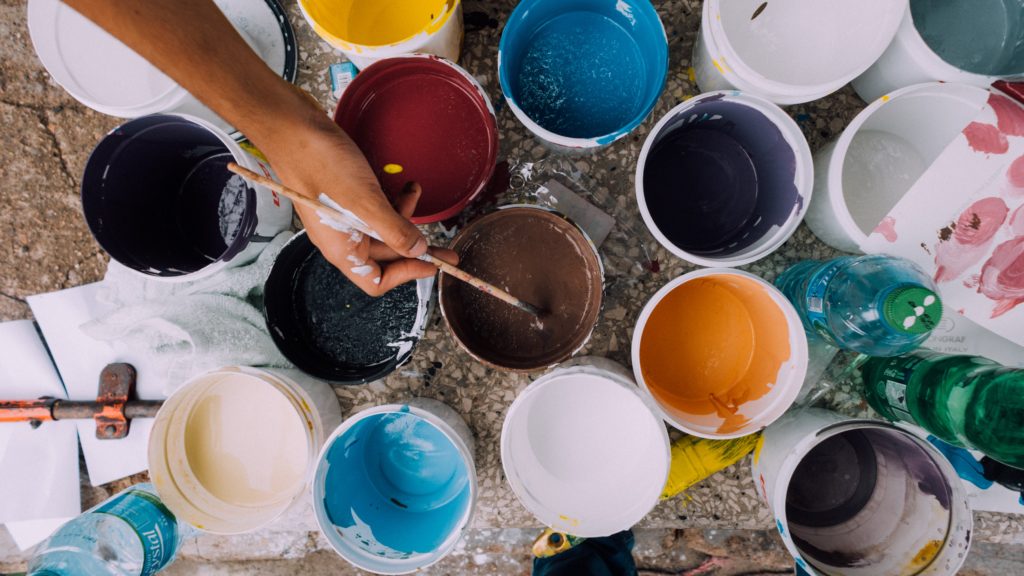Are you ready to take your podcast interviews to the next level? In this article, we will explore the essential tools and equipment that can help you master the art of podcast interviews. From professional microphones like the Shure SM7B and the Blue Yeti, to audio interfaces, headphones, and studio monitors, we will guide you through the gear you need to create high-quality interviews. Additionally, we’ll discuss software options like Adobe Audition and Audacity for editing and recording, as well as tips for creating an engaging interview style. Whether you’re a seasoned podcaster or just starting out, this article will provide you with all the knowledge and resources to elevate your podcast interviews to new heights.

Understanding the Art of Podcast Interviews
Podcasts have become increasingly popular over the years, allowing individuals to share their voices and perspectives with a global audience. One key element of a successful podcast is the interview. Podcast interviewing is a unique skill that requires preparation, technique, and the right equipment. In this article, we will explore the art of podcast interviewing, including the importance of mastering this skill and the common formats used.
What is podcast interviewing?
Podcast interviewing is the act of conducting an interview as part of a podcast episode. It involves engaging in a conversation with a guest, asking them questions, and eliciting insightful and compelling responses. The goal of a podcast interview is to create an engaging and informative conversation that resonates with the listeners.
The importance of mastering podcast interviews
Mastering the art of podcast interviews is crucial for several reasons. Firstly, a well-conducted interview can captivate your audience and keep them coming back for more. Engaging conversations can establish a connection between the host and the guest, fostering a loyal listener base.
Secondly, podcast interviews offer a unique opportunity to learn from experts and thought leaders in various fields. By conducting in-depth interviews, you can tap into their knowledge and provide valuable insights to your audience.
Lastly, a successful podcast interview can elevate your podcast’s reputation and attract high-profile guests. When guests have a positive experience on your show, they are more likely to recommend it to others and even return as a guest in the future.
Common podcast interview formats
There are several formats you can choose from when conducting a podcast interview, depending on your goals and preferences. Here are some of the most common formats:
-
One-on-one interviews: This format involves a conversation between the host and a single guest. It allows for deep dives into the guest’s expertise or personal experiences.
-
Panel interviews: In this format, multiple guests are invited to participate in a discussion on a specific topic. Panel interviews can offer diverse perspectives and lively exchanges.
-
Roundtable discussions: Similar to panel interviews, roundtable discussions involve multiple guests. However, in this format, the focus is on a broader theme or issue, and guests have more freedom to engage with each other.
-
Expert Q&A: This format involves a host asking a series of questions to an expert in a particular field. It is suitable for podcasts that aim to provide informative content to their audience.
-
Storytelling interviews: Storytelling interviews focus on guests sharing personal narratives or anecdotes. This format allows for a more intimate and emotional connection with the audience.
Choosing the right interview format depends on your podcast’s niche, target audience, and the type of content you wish to produce. Experimentation with various formats can help you find the one that best aligns with your podcast’s goals and resonates with your listeners.
Preparation for Podcast Interviews
Preparing for a podcast interview is essential to ensure a smooth and engaging conversation. Here are some key steps to take before every interview:
Doing your homework
Researching your guest thoroughly is crucial for conducting a successful interview. Familiarize yourself with their background, achievements, and areas of expertise. This will not only help you craft relevant questions but also demonstrate to your guest that you value their knowledge and time.
Crafting your interview questions
Crafting thoughtful and engaging questions is a fundamental aspect of podcast interviewing. Begin by outlining the main topics or themes you wish to cover during the interview. Then, brainstorm specific questions that will elicit detailed and insightful responses from your guest. Avoid generic or yes/no questions and instead focus on open-ended inquiries that encourage conversation.
Pre-Interview communication with your guest
Before the interview, it is vital to establish clear communication with your guest. Provide them with information about the interview format, duration, and any technical requirements they may need to prepare for. Additionally, ask if there are any specific topics or questions they would like to discuss or if they have any special requests. Building a rapport with your guest before the interview can help create a comfortable and collaborative atmosphere.

Podcast Interview Techniques
Mastering podcast interview techniques is key to conducting engaging and impactful conversations. Here are some techniques to incorporate into your interviewing style:
Active listening
Actively listening to your guest is essential for a successful podcast interview. Avoid interrupting or dominating the conversation and instead focus on genuinely hearing and understanding what your guest is saying. This allows for more organic follow-up questions and shows your guest that you value their input.
The art of follow-up questions
Follow-up questions are an effective way to delve deeper into a topic or to seek clarification. When your guest provides an interesting or thought-provoking response, consider asking follow-up questions to encourage further exploration of the subject. This demonstrates your engagement and keeps the conversation flowing.
Maintaining control of the conversation
While it is important to listen and allow your guest to share their insights, it is equally crucial to maintain control of the conversation. As the host, it is your responsibility to keep the interview focused, ensuring that the topics you outlined are covered adequately. Redirect the conversation if it veers off-track or becomes too tangential.
Navigating difficult or sensitive topics
During a podcast interview, you may encounter difficult or sensitive topics that require sensitivity and tact. Prepare for these scenarios by being aware of potential trigger points and knowing how to navigate them respectfully. Prioritize your guest’s comfort and willingness to share while still probing for valuable insights.
Utilizing Effective Podcast Equipment
Having the right podcast equipment is essential for achieving high-quality audio and a professional production. Here are a few key pieces of equipment to consider:
Choosing the right microphone: Shure SM7B Cardioid Dynamic Microphone and others
The microphone you choose can greatly impact the audio quality of your podcast interviews. The Shure SM7B Cardioid Dynamic Microphone is a popular choice among podcasters due to its excellent sound reproduction and background noise rejection. However, there are other high-quality options available, such as the Rode PSA1 Swivel Mount Studio Microphone Boom Arm and the Blue Yeti USB Microphone. Consider your budget and specific needs when selecting a microphone.
The importance of a good audio interface: Focusrite Scarlett 2i2 (3rd Gen) USB Audio Interface
An audio interface is essential for connecting your microphone to your computer and ensuring clean and clear audio recordings. The Focusrite Scarlett 2i2 (3rd Gen) USB Audio Interface offers high-quality preamps and converters, enabling professional-grade recordings. It also provides phantom power for microphones that require it. Investing in a reliable audio interface can significantly enhance the audio quality of your podcast interviews.
Why you need a quality studio monitor: KRK ROKIT 5 G4 Studio Monitor
A studio monitor is designed to reproduce accurate audio, allowing you to hear the nuances and details of your recordings. The KRK ROKIT 5 G4 Studio Monitor is a popular choice among podcasters for its balanced sound and clarity. Using a quality studio monitor ensures that your podcast audio is balanced and free from any imperfections.
Choosing the right podcasting equipment may seem overwhelming at first. However, by considering your budget, needs, and researching product reviews, you can find the equipment that best suits your podcasting goals.

Leveraging Podcast Recording Software and Tools
To enhance the quality and efficiency of your podcast interviews, there are several recording software and tools available. Here are a few worth considering:
Benefits of Adobe Audition Podcasting Software
Adobe Audition is a professional-grade software that offers advanced editing and post-production capabilities. It allows you to cut, trim, and enhance your podcast audio with ease. Additionally, Adobe Audition provides noise reduction tools, allowing you to remove any unwanted background noise. Its intuitive interface and comprehensive features make it a popular choice among podcasters.
Why use Audacity Free Audio Editor and Recorder
Audacity is a free, open-source audio editing software that offers a wide range of features. It allows you to record, edit, and mix your podcast interviews effortlessly. While it may not have as many advanced features as paid software, Audacity is a great option for beginners or those on a tight budget.
Exploring Auphonic Audio Leveling and Mastering Tool
Auphonic is an online platform that automates audio post-production tasks, such as leveling and mastering. It analyzes and adjusts the audio’s loudness, ensuring consistent volume levels throughout your podcast episode. Auphonic can save you time and effort by streamlining your post-production workflow.
Utilizing these software and tools can enhance the quality and overall production value of your podcast interviews. Experiment with different options to find the ones that align with your workflow and editing preferences.
Essential Audio Adjustments for Podcast Interviews
Understanding audio dynamics and making necessary adjustments can significantly improve the quality of your podcast interviews. Here are a few essential audio adjustments to consider:
Understanding audio dynamics
Audio dynamics refer to the range between the quietest and loudest parts of your podcast interview. It is crucial to ensure that the audio dynamics are balanced to provide a comfortable listening experience. Avoid excessive volume fluctuations or “clipping” (when the sound becomes distorted due to excessively high levels) by using proper gain staging and compression techniques.
Using Behringer Xenyx X1204USB Premium 12-Input Mixer
A mixer allows you to control and adjust various audio inputs, such as microphones and music tracks, in real-time. The Behringer Xenyx X1204USB Premium 12-Input Mixer offers multiple inputs and intuitive controls, making it an excellent choice for podcasters. It enables you to fine-tune your audio levels and create a balanced sound mix.
Introduction to Cloud Microphones Cloudlifter CL-1 Mic Activator
The Cloud Microphones Cloudlifter CL-1 Mic Activator provides additional clean gain for low-output microphones. It helps improve the signal quality, resulting in a clearer and more professional sound. If you are using a microphone with a lower output level, such as the Sennheiser E835 Dynamic Cardioid Vocal Microphone, the Cloudlifter CL-1 can be a valuable addition to your audio setup.
Making these audio adjustments can take your podcast interviews to the next level, ensuring that your audience enjoys a consistent and professional listening experience.

Importance of High Quality Podcast Headphones
High-quality headphones are crucial for monitoring and reviewing your podcast interviews. Here are a few options worth considering:
Audio-Technica ATH-M50x Professional Studio Monitor Headphones: an overview
The Audio-Technica ATH-M50x Professional Studio Monitor Headphones are highly regarded among podcasters for their accurate sound reproduction and comfortable design. They provide excellent audio clarity, allowing you to assess the quality of your recordings and make any necessary adjustments. These headphones are durable and suitable for long recording or editing sessions.
AKG K240 Studio Semi-Open Over-Ear Professional Studio Headphones: why they matter
AKG K240 Studio Semi-Open Over-Ear Professional Studio Headphones offer a balanced and natural sound representation, making them suitable for podcast monitoring. The semi-open design allows for a wider soundstage and enhanced depth perception. These headphones are lightweight and comfortable, making them ideal for extended podcasting sessions.
Sony MDR7506 Professional Large Diaphragm Headphones: their contribution
The Sony MDR7506 Professional Large Diaphragm Headphones are widely used in professional audio settings, including podcasting. They provide accurate sound reproduction and excellent noise isolation, ensuring that you can focus on the details of your recordings. These headphones are durable and foldable, making them convenient for on-the-go podcasters.
Investing in high-quality podcast headphones allows you to accurately monitor your recordings and make informed decisions during the editing process. Choose a pair that offers a comfortable fit and accurate sound representation to optimize your podcast’s audio quality.
Podcast Visuals and Streaming Essentials
While podcasting may primarily be an audio medium, visuals and streaming tools can enhance your overall podcasting experience. Here are a few essentials to consider:
Why you need a good webcam: Logitech C920 HD Pro Webcam
A good webcam is essential if you plan to incorporate visual elements into your podcast, such as live video recordings or streaming. The Logitech C920 HD Pro Webcam offers high-definition video quality and a wide-angle view, ensuring a crisp and clear image. It is compatible with various streaming platforms and video conferencing applications, making it a versatile choice.
Utilizing Elgato Stream Deck for seamless streaming
The Elgato Stream Deck is a customizable control panel that streamlines the streaming process. It allows you to assign various actions and commands to its buttons, making it easier to switch between scenes, control audio levels, and engage with your audience during live streams. The Stream Deck enhances the overall streaming experience and provides a professional touch to your podcasts.
Exploring Canva Graphic Design Tool for visual content
Canva is a graphic design tool that offers a range of templates and customizable elements. It allows you to create eye-catching visuals for your podcast, such as cover art, social media posts, or promotional materials. Canva’s intuitive interface and extensive library of design assets make it accessible to podcasters with little to no design experience.
Incorporating visual elements into your podcast can add depth and engagement to your content. Whether you choose to stream live video or create visually appealing graphics, these tools can enhance the overall podcast experience for both you and your audience.
Post-Interview Processes
After conducting a podcast interview, there are several post-interview processes that are essential to ensure a polished and professional episode. Here are a few key steps to consider:
Editing and mastering your podcast interview
Editing your podcast interview involves trimming any unnecessary parts, removing pauses or awkward transitions, and ensuring smooth audio flow. Additionally, you may need to apply noise reduction, equalization, and compression techniques to enhance the overall audio quality. Mastering your podcast interview involves finalizing the audio mix and ensuring consistent volume levels throughout the episode. This process may require advanced audio editing software, such as Adobe Audition or Audacity.
Transcribing your podcast interview
Transcribing your podcast interview can provide numerous benefits, including accessibility for hearing-impaired individuals and improved search engine optimization. Transcripts allow your audience to follow along with the conversation and reference specific points discussed in the episode. AI-powered transcription services, such as Otter.ai or Rev, can automate the transcription process and save you time.
Promoting your podcast interview
Once your podcast interview is edited and ready for release, it is essential to promote it effectively to reach your target audience. Utilize your podcast’s social media channels, website, and email newsletters to create buzz around the episode. Create visually appealing graphics or video clips to share snippets of the interview and entice listeners to tune in. Engage with your guest’s audience by encouraging them to share the episode with their network. Effective promotion can help maximize the reach and impact of your podcast interviews.
Continual Improvement of Podcast Interview Skills
The art of podcast interviewing is a skill that can always be honed and improved. Here are a few strategies to enhance your podcast interview skills:
Gathering feedback
Seek feedback from your audience and fellow podcasters to gain insights into your interview style and areas for improvement. Encourage listeners to leave reviews or reach out to you with their thoughts and suggestions. Actively listen to the feedback and incorporate relevant recommendations into your future interviews.
Learning from others: Top podcast interviewers to follow
Study the work of successful podcast interviewers to learn from their techniques and approaches. Research top podcasters in your niche or explore well-known interviewers across different genres. Pay attention to their interviewing style, question formulation, and overall flow of the conversation. Implementing elements that resonate with you can help elevate your own interviewing skills.
Implementing new techniques and trends
Stay updated with the latest podcast interviewing techniques and trends by investing time in continuous learning. Attend podcasting conferences, workshops, or webinars that focus on interviewing skills. Engage with online communities or forums dedicated to podcasting to exchange ideas and learn from fellow podcasters. Embrace new techniques and experiment with fresh ideas to keep your podcast interviews dynamic and engaging.
Mastering the art of podcast interviews takes time, practice, and a commitment to continuously improving your skills. By incorporating feedback, learning from experienced interviewers, and staying open to new techniques, you can elevate your podcasting abilities and create captivating interviews that resonate with your audience.
In conclusion, podcast interviewing is an art that requires preparation, technique, and the right equipment. By understanding the importance of mastering podcast interviews, preparing thoroughly, utilizing effective equipment and software, and continuously improving your skills, you can create engaging and impactful podcast interviews that captivate your audience. Embrace the art of podcast interviewing and enjoy the process of connecting with guests and delivering valuable content to your listeners.
